Getting Deals Done in Today’s Environment
The real estate market has been affected by the rapid increase in interest rates, causing a gap between buyers and sellers. Although there are few forced sellers and most owners have rate caps in place, the imbalance between buyers and sellers makes it a challenging time to be a buyer..

The speed with which interest rates have increased have shocked the real estate market, leaving many investors scrambling to understand the new environment we are in. On the transactions side, there is an approximate 10% market-wide bid/ask gap between buyers and sellers, causing transaction volume to fall off a cliff. The reason for this is because buyers must immediately incorporate prevailing debt terms in their acquisition underwriting which pushes their pricing down.
However, sellers don’t necessarily have to make the same immediate adjustment to their valuation of their assets. Sellers must go through a much longer psychological process of coming to the realization that their assets are worth less today than before. With that being said, the real estate market is healthy, and most owners are not over-levered and likely have rate caps in place on their floating rate loans. This means there are extremely few forced sellers in the market, which means there are no bargains.
I saw an interesting poll on LinkedIn asking whether people thought today was a buyer’s or seller’s market. I was surprised to see that buyer’s market won more votes. While it is not a pleasant time to be a seller since values are off their peak and PSA terms have improved in buyer’s favor, it is absolutely not a buyer’s market. Simply put, there are much more real buyers today than there are real sellers. Sure, there are owners willing to sell at yesterday’s price, but how many sellers are willing to take what the market will give them? This imbalance of more buyers than sellers prevents prices from falling too far into cheap territory.
In my opinion, it is one of the worst times to be a buyer right now due to the difficulty of execution. Debt is unattractive today and there is a sense of lack of confidence in quoted terms due to the constant changes in the debt market. In particular, bank debt is the best option right now, but that market is fragmented and somewhat exhausted.
This new debt environment calls for a new analysis on debt strategies. Fixed versus floating rate debt remains a hot topic. Investors who are frustrated by increasing debt service costs in their portfolio as a result of having floating rate debt may be inclined to go to fixed rate debt for new deals. However, right now could turn out to be a very bad time to lock in a fixed rate since interest rates on both the short end (SOFR) and on the long end (10-year US treasury yield) of the curve are likely to go down. Here is an insightful analysis on the way a tightening cycle historically ends and how the easing cycle begins on average 8.7 months after the last rate hike: https://www.pensford.com/industry-news/the-bottom-will-drop-out-next-year
As the Fed finishes their rate hikes, investors will turn their focus from rising rates and inflation to recession, which will cause the 10-year US treasury yield to fall (flight to quality). This means that fixed rates are likely to be lower in six months to a year from now.
Another issue with fixed rate loans is to do with yield maintenance. If an investor fixes at a high rate today with yield maintenance and rates move lower, their yield maintenance prepayment penalty will be prohibitively expensive, forcing the investor to sell their property subject to a loan assumption. Continuing with the assumption that the assumed loan interest rate is above-market, the assumption will reduce the sale price. For this reason, it is likely worth paying the extra interest rate adder for a step-down prepayment penalty instead of yield maintenance. However, agency lenders are privy to this concept and have recently dramatically increased the cost of this adder, supporting the notion that yield maintenance is likely to be more expensive in the future.
However, investors interested in floating rate debt to potentially get the benefit of floating lower in the next year or so have a different problem to worry about: interest rate cap costs. Floating should end up being cheaper than locking in a fixed rate (Pensford analysis) but this calculus doesn’t necessarily pan out when factoring in the exorbitant cost of an interest rate cap.
There are a few ways to make deals really work in today’s market: loan assumptions, all cash deals, and seller financing. All of these are rare and aren’t perfect. Loan assumptions and seller financing can help bridge today’s wide bid/ask gap, but they don’t necessarily create a competitive advantage between buyers since they can be uniformly offered to all prospective buyers. However, a savvy buyer may be able to negotiate seller carry in a situation where other buyers may not be pursuing such an option.
All cash deals are certainly a competitive advantage, but it is very difficult for most sponsors to find a way to pull this off. The same family offices / private equity firms that have the means to buy a deal all cash, are likely the same groups that have the patience to wait this uncertain time out.
